I tried Samsung's best OLED TV next to Sony, LG and Philips – the results were surprising
Philips' OLED+950 has some tricks up its sleeve
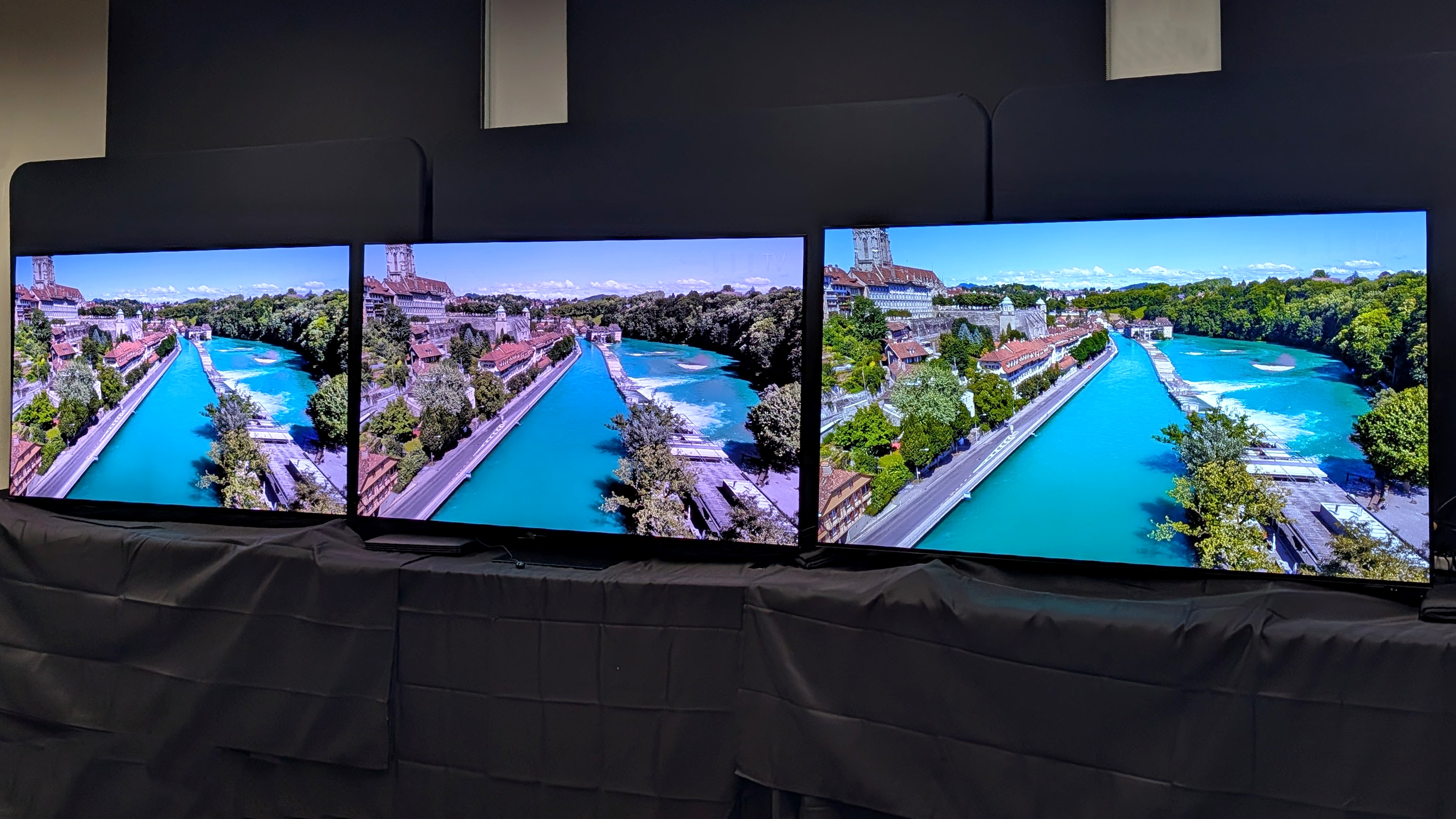
It's been a bumper year for the best TVs already, with new panels being introduced and seeds sown for future technologies – so when Philips invited me down to Dolby's HQ in London to see its top-tier OLED+950 set in action, it certainly piqued my interest.
I'd already seen the Philips OLED+950 upon its reveal back in late January this year (official pricing followed later, in June), but now that the set – which sits above the similar OLED+910 model – is on sale (and with a huge discount at Richer Sounds), it's here to make a case against its key competitors.
And the key competition were all present at Dolby HQ, side-by-side in a line-up, with the Samsung S95F, Sony Bravia 8 II and LG OLED G5 all able to show off their abilities.
These are different panel types: the first two are QD-OLED; the LG and Philips are 'classic' W-OLED – albeit utilising the brand new multi-layer panel, as first introduced this year (the Panasonic Z95B also uses this panel, which is another consideration).
Pricing & Size Options
The Philips OLED+950 comes in two sizes only: 65- or 77-inch. Its step-down sibling, the OLED+910, however, offers a 55-inch model in addition (the panel and brightness are the same, its just a processor difference).
The Samsung, Sony and LG all offer the same 65- and 77-inch options (the largest Sony via its older A95L model), plus additional size options further down the scale that may appeal to wider markets. LG even dips below 55-inches, with a 48-inch variant.
Here I'm focusing on the 65-inch models in particular, as that's what was tested side-by-side, and I think price comparison-wise you'll get the best idea of how similarly pitched each of these sets is, as below:
Get all the latest news, reviews, deals and buying guides on gorgeous tech, home and active products from the T3 experts
65-inch model | UK | US | AU |
Philips OLED+950 | £2,799 | N/A | N/A |
Philips OLED+910 | £2,199 | N/A | N/A |
Samsung S95F | £3,399 | $3,299 | AU$5,299 |
LG OLED G5 | £3,299 | $3,399 | AU$5,299 |
Sony Bravia 8 II | £2,699 | $3,499 | $5,295 |
Panasonic Z95B | £2,999 | $3,399 | N/A |
Do note, however, that those are 'day one' prices, i.e. the recommended retail price, and that many have already tumbled by several hundred since introductory sales.
The field is actually now much closer than the table's RRPs may suggest, with perhaps £100 of difference between the key flagships. That only goes to make your choice even more tricky, quite honestly!
Picture & Processing
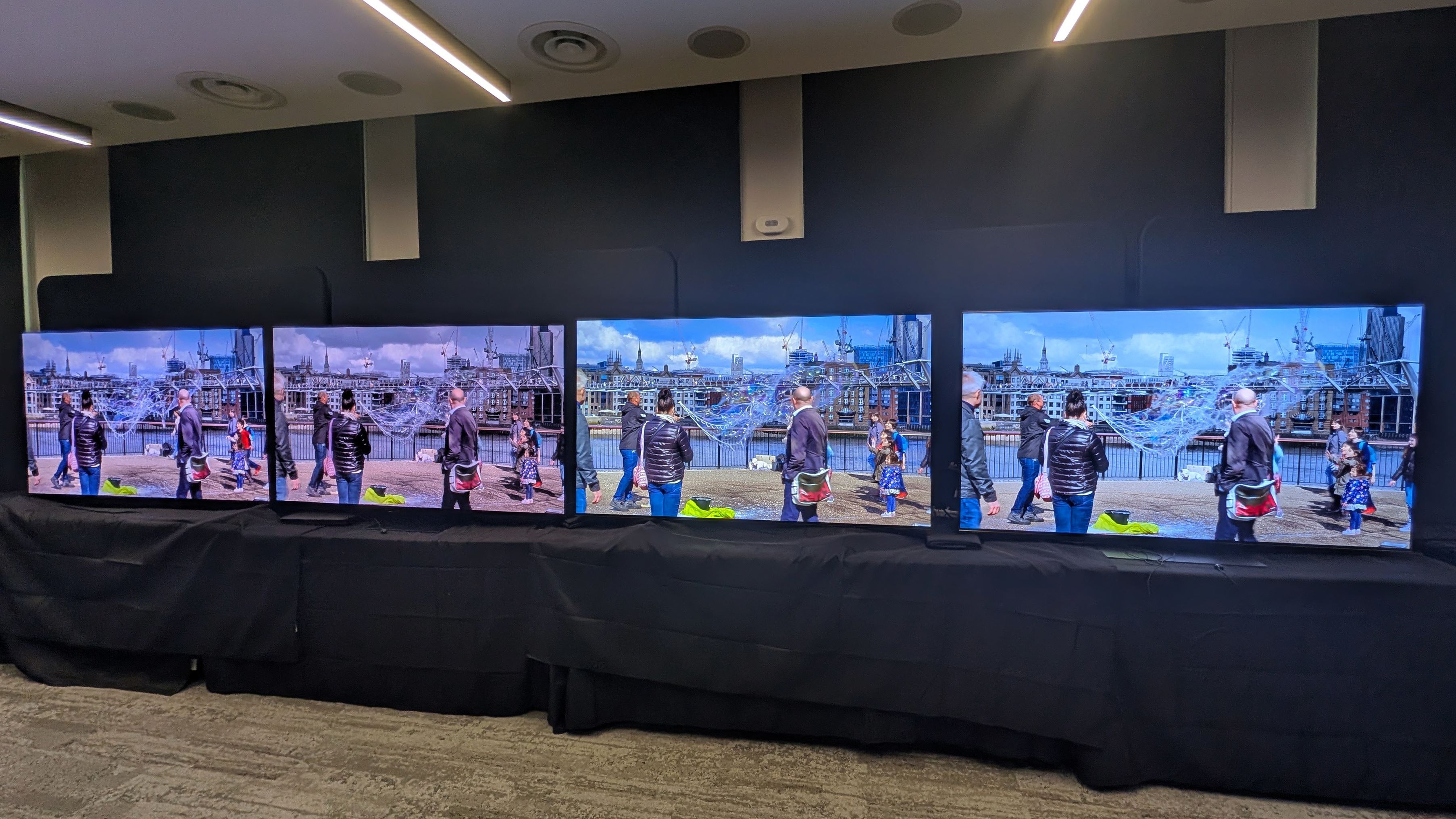
Sony Bravia 8 II (left), Samsung S95F (middle left), Philips OLED+950 (middle right), LG OLED G5 (right)
While this test didn't show it off especially well, I'll start by highlighting that the Philips is the only set to offer Ambilight – the edge projection system of LEDs on its rear, that 'expand' the picture beyond the frame onto surrounding walls.
It's a great and unique sell, though you can switch it off or adjust intensity whenever you want. Plus it doesn't actually add to the price you'll pay to buy the set. That's one big bonus point for Philips from the off, in my view, not that the others lack their appeals.
Colour & Clarity
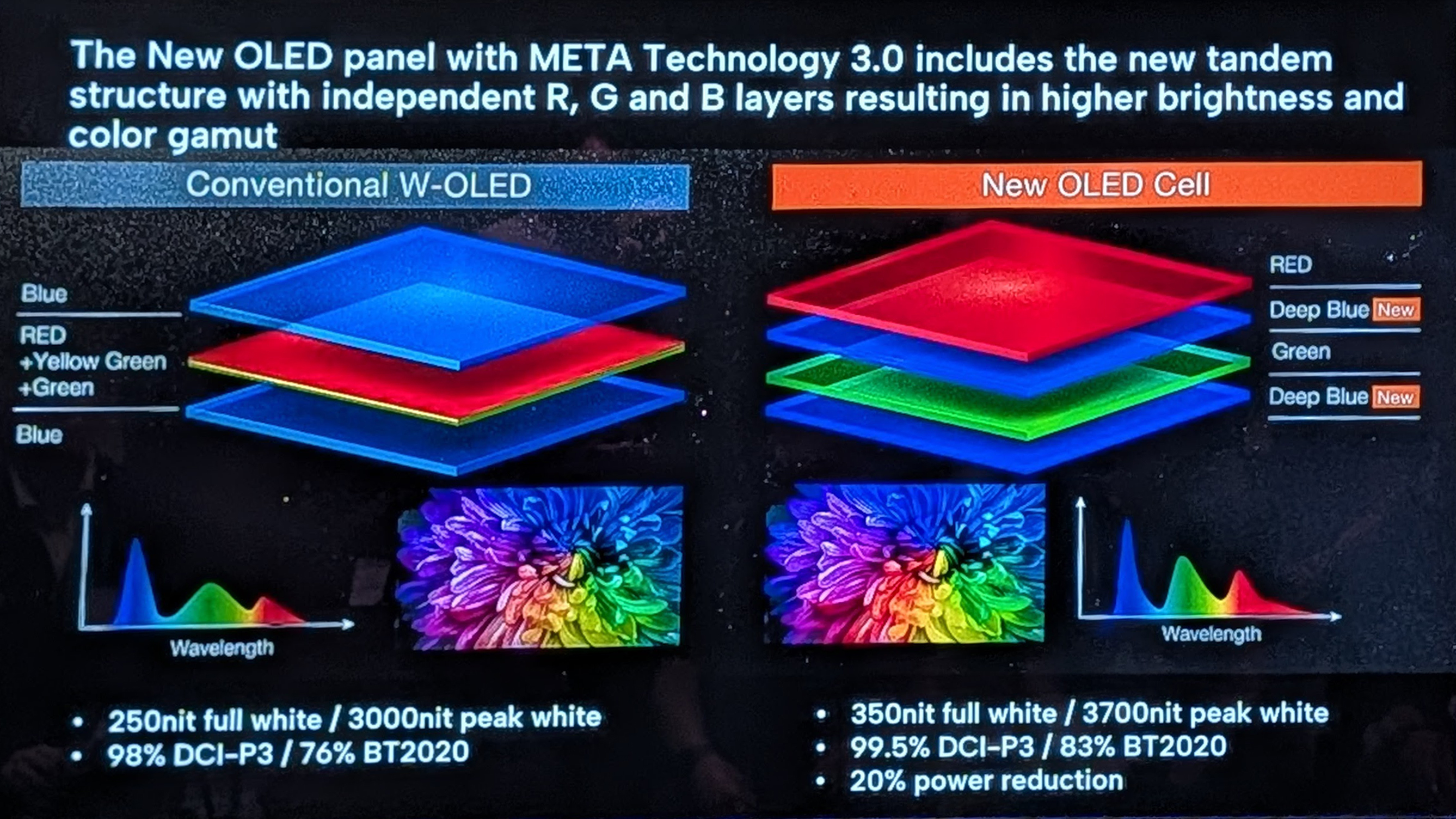
The majority of testing was conducted in Dynamic Mode (or equivalent), as that's what many TVs default to and the mode highlights many panels' top potential when it comes to brightness and colour saturation.
I wouldn't use Dynamic for many types of content, frankly, but animations and sports can take their benefit from this option. Especially in case of the former, where the high dynamic range (HDR) gamut range is huge.
Colour is always going to be of preference, but the demo ultimately served to show that QD-OLED (Samsung and Sony) can present better red colours than classic OLED (Philips and LG).
On the flip side to that, as wasn't shown in this demo, lower brightness output for QD-OLED can struggle to present ample saturation. So for cinematic experiences, such as Movie Mode or Filmmaker Mode, the likes of the LG OLED G5 is actually exceptional.
Philips has an AI Mode to influence its colour, with an enhancement slider from 1-100 allowing you to really ramp it up. The AI Mode is effective at recognising subjects, however, so it will preserve skin tone rather than amplifying colour castes to excess.
The Philips also offers another AI-enhanced feature, Specular Highlights, in which you can apply a more pronounced HDR highlight, selecting from 'low' to 'medium' to 'high'. It has its benefit to give the impression of enhanced clarity, but on 'high' it actually just gives the impression of oversharpening – so I'd use it in moderation.
Motion & Processing
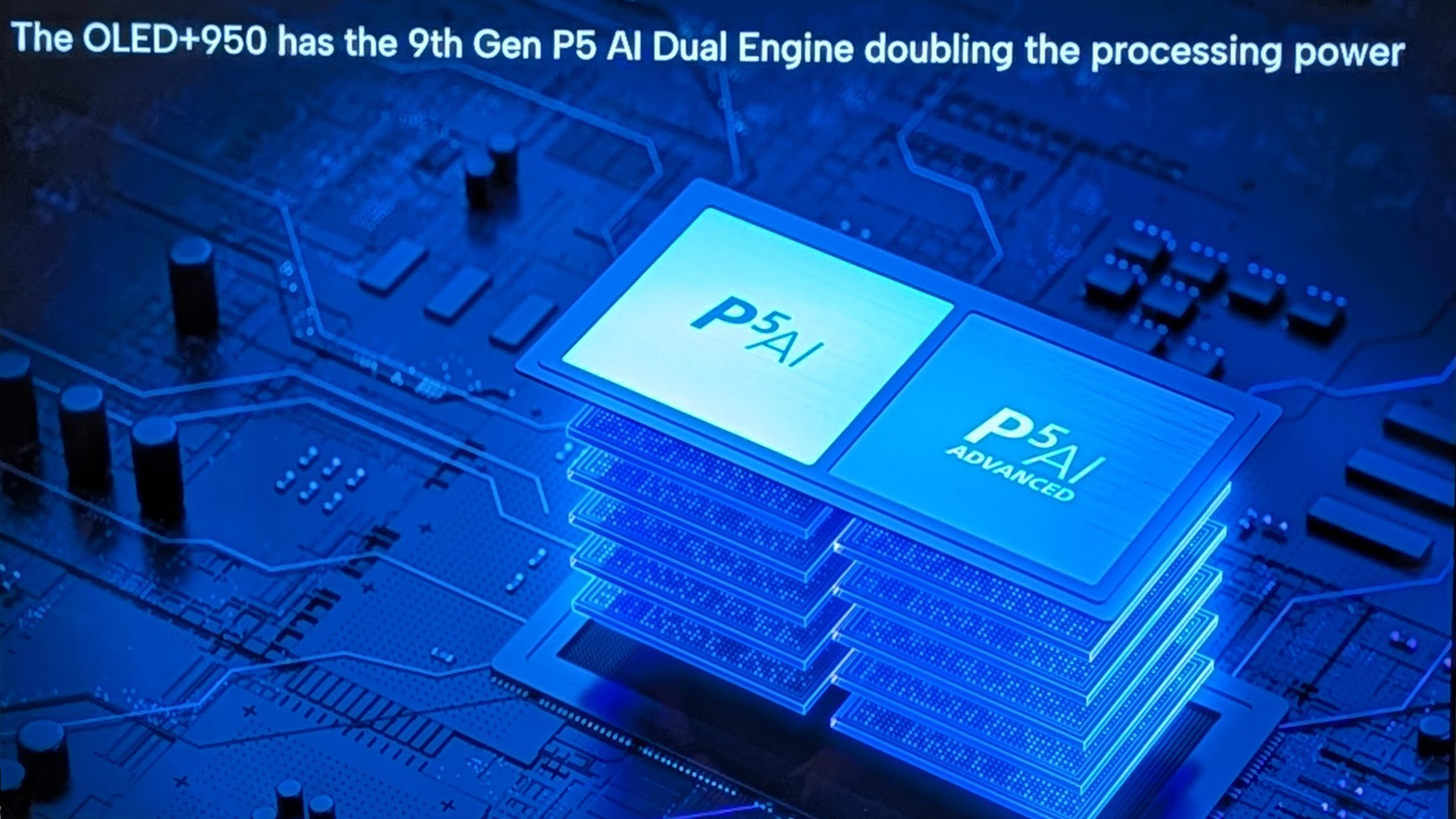
The way each set's Dynamic Mode (or equivalent) processes HDR data is interesting too. Philips likes to lift the blacks to present some detail you'd otherwise miss, while Samsung – opting for lower brightness by default – actually hyper-contrasts black levels, sometimes to excess in light room scenarios.
Such visuals are always going to be a matter of preference; I actually think the LG delivers the more cinematic visual of the lot – although its processing is weak when it comes to fast panning, catching artefacts that judder the visual (and it's the same with the Sony).
There's no denying peak brightness from the lot of these sets is very high. The Samsung is perhaps a little shy of using it, while the Philips is quite the opposite – confidently pushing out peak whites when able. That gives its images great punch.
Black Levels & Anti-Reflection
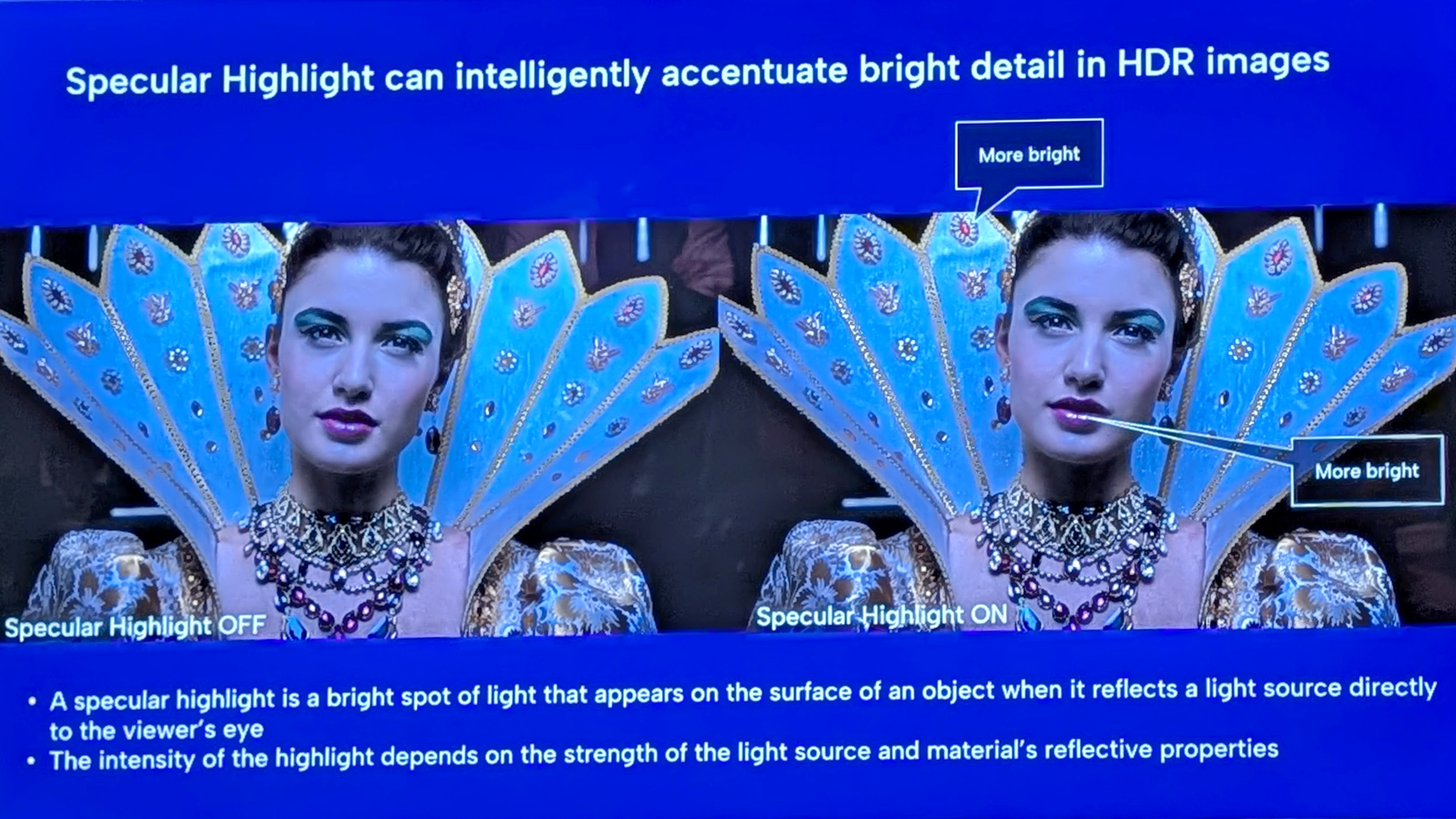
There's been a move towards anti-reflective panels in recent flagship sets, with the Samsung S95F deploying a particularly effective Glare Free solution. This is ideal for daylight viewing, able to diffuse light sources from reflecting, but it does come at the cost of black level visibility in daylight viewing.
The Philips OLED+950 features a new Vanta polarising layer, which isn't as 'strong' as the Samsung's offering, but it avoids that black level compromise in light conditions. Therefore the black levels can have a deeper quality to them – ignoring the 'shadow lifting' effect applied by processing, anyway.
If you're going to have a TV that's exposed to light sources a lot of the time, however, then Samsung's solution is likely to make most sense. If you are able to control such sources more ably, then the Philips will deliver a richer looking result. If you have more of a 'cinema room', however, then LG's subtle hand at delivering cinematic blacks – and multiple levels between them – is impressive.
In Conclusion
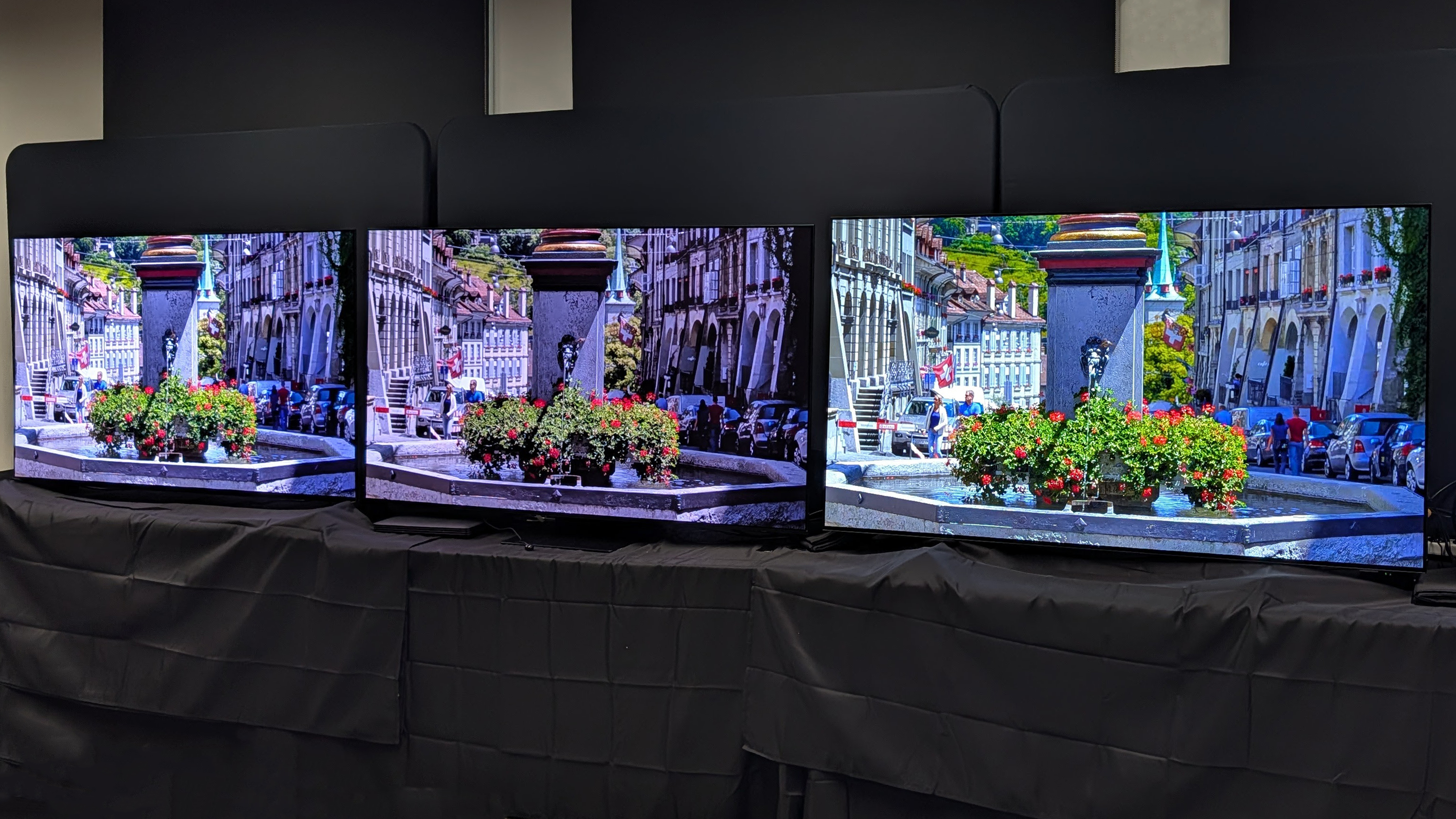
Seeing Philips OLED+950 set up close and in action was great to witness. I love the Ambilight feature. I'm a fan of this new 'META 3.0 panel' type, as also used by the LG OLED G5 – but handled in a slightly different way.
Philips might have the most all-round pleasing image results for most people's daylight home viewing, too. The degree of colour saturation, high dynamic range handling, strong brightness, and deft motion handling, are all strong points.
Its price is also very competitive, considering everything on offer, although some of the AI Mode added effects I could actually live without – and that makes the OLED+910 the overall more appealing offering.
All four sets on show are winners, though, all 5-star products – just with different points of focus and benefits. If you want daylight viewing and the pinnacle of anti-reflection then Samsung's S95F wins. If you want to watch movies all the time and have the dark room conditions for it, LG's OLED G5 is the most cinematic. As an all-rounder, though, the Philips is the dark horse – one that's well worth betting on.
Follow T3.com on Google News to keep our latest news, insights, and features at the top of your feeds!

Mike is T3's Tech Editor. He's been writing about consumer technology for 15 years and his beat covers phones – of which he's seen hundreds of handsets over the years – laptops, gaming, TV & audio, and more. There's little consumer tech he's not had a hand at trying, and with extensive commissioning and editing experience, he knows the industry inside out. As the former Reviews Editor at Pocket-lint for 10 years where he furthered his knowledge and expertise, whilst writing about literally thousands of products, he's also provided work for publications such as Wired, The Guardian, Metro, and more.
You must confirm your public display name before commenting
Please logout and then login again, you will then be prompted to enter your display name.

